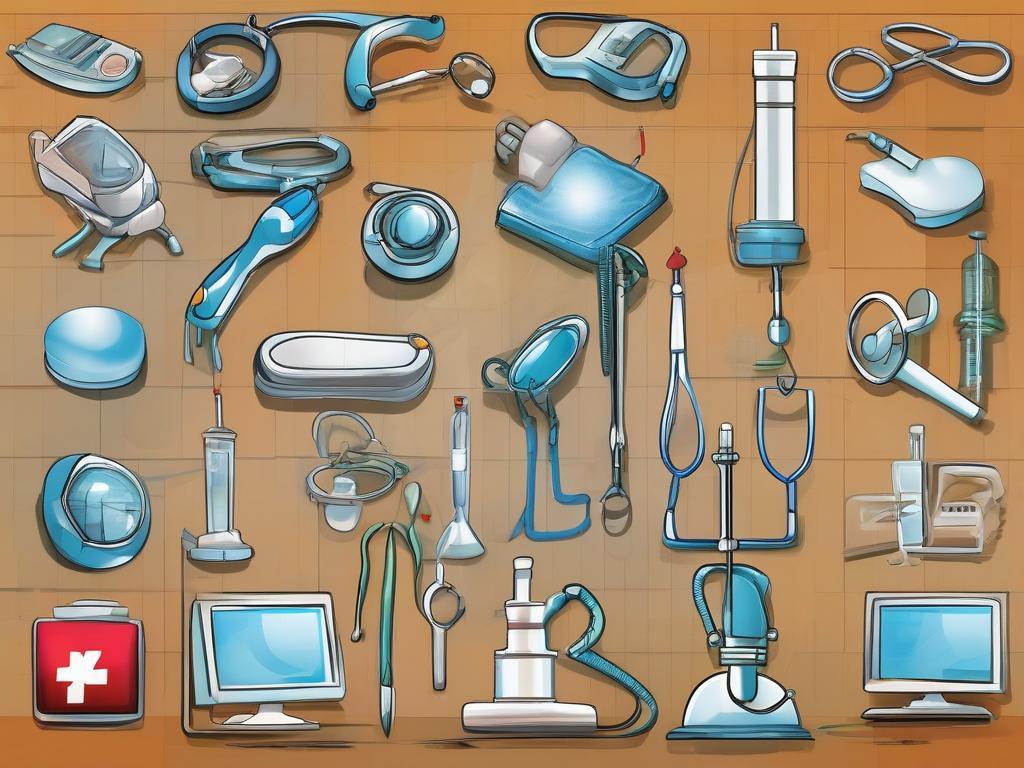Who Are the Buyers of Global Medical and Surgical Equipment?
The global medical and surgical equipment market is a multi-billion-dollar industry, driven by increasing healthcare demands, technological advancements, and aging populations. But who exactly are the medical equipment buyers shaping this lucrative market? Whether you’re a manufacturer, distributor, or investor, understanding the key purchasers in this space can unlock massive financial opportunities. In this guide, we’ll break down the major players, their purchasing behaviors, and how you can position yourself for success in this booming industry.
1. Hospitals & Healthcare Facilities: The Largest Medical Equipment Buyers
Hospitals and large healthcare institutions dominate the global medical market, accounting for the majority of purchases in surgical and diagnostic equipment. These buyers prioritize reliability, advanced technology, and compliance with regulatory standards.
Public vs. Private Hospitals
Public hospitals often purchase in bulk through government contracts, while private hospitals may focus on high-end, specialized equipment.
- Public Hospitals: Budget-driven, bulk purchases, long procurement cycles.
- Private Hospitals: Premium equipment, faster decision-making, brand preference.
Key Considerations for Selling to Hospitals
- Compliance with FDA, CE, and other certifications.
- Strong after-sales service and warranties.
- Demonstrable ROI for expensive equipment.
| Hospital Type | Purchase Volume | Decision-Making Speed |
|---|---|---|
| Public Hospitals | High (bulk orders) | Slow (government approvals) |
| Private Hospitals | Moderate to High | Fast (private funding) |
2. Clinics & Outpatient Centers: Surging Demand for Specialized Equipment
Smaller healthcare providers, including specialty clinics and outpatient centers, are emerging as significant surgical equipment purchasers. They often seek cost-effective, space-efficient solutions.
Types of Clinics Driving Purchases
- Dental Clinics: High demand for imaging and sterilization equipment.
- Diagnostic Centers: Require advanced lab and imaging machines.
- Surgical Centers: Need portable and minimally invasive tools.
How to Sell to Clinics Effectively
- Offer flexible financing options.
- Highlight ease of use and maintenance.
- Provide training and support.
3. Government & Military Buyers: Bulk Orders with Strict Standards
Governments and military organizations are major medical equipment buyers, especially for emergency preparedness and defense healthcare systems.
Key Government Procurement Channels
- Tenders and public bids.
- Long-term contracts with approved vendors.
- Preference for locally manufactured products in some regions.
Military Medical Equipment Needs
- Portable and rugged devices for field use.
- High-durability surgical kits.
- Telemedicine solutions.
4. Distributors & Resellers: The Middlemen of the Medical Equipment Market
Distributors play a crucial role in the international surgical market, acting as intermediaries between manufacturers and end-users.
Why Partner with Distributors?
- They have established networks in multiple regions.
- They handle logistics, customs, and regulatory hurdles.
- They provide localized sales and marketing support.
How to Choose the Right Distributor
- Evaluate their market reach and reputation.
- Check their compliance with local regulations.
- Negotiate favorable terms for mutual growth.
5. Research Institutions & Universities: Innovators Driving Demand
Academic and research institutions are key purchasers of cutting-edge medical and surgical equipment for experimental and training purposes.
What Research Buyers Look For
- High-precision instruments for studies.
- Customizable and modular equipment.
- Partnerships for R&D collaborations.
Top Universities Investing in Medical Equipment
| Institution | Focus Area | Annual Budget (Est.) |
|---|---|---|
| Harvard Medical School | Biomedical Research | $1B+ |
| Johns Hopkins University | Surgical Robotics | $750M+ |
Conclusion: Seize Your Opportunity in the Medical Equipment Market
The medical equipment buyers landscape is diverse, offering endless opportunities for manufacturers, suppliers, and investors. By understanding the purchasing behaviors of hospitals, clinics, governments, distributors, and research institutions, you can strategically position yourself for exponential growth. The key to success lies in building strong relationships, ensuring compliance, and delivering unmatched value.
Ready to tap into this lucrative market? Visit our shop for premium medical equipment and expert insights. For personalized assistance, contact us today and let’s grow your business together!
Frequently Asked Questions (FAQs)
Who are the biggest buyers of medical equipment?
Hospitals, government agencies, and large healthcare systems are the biggest buyers, often purchasing in bulk through contracts or tenders.
How do I sell medical equipment internationally?
Partner with local distributors, ensure compliance with regional regulations, and participate in global trade shows to expand your reach.
What certifications are required for medical equipment sales?
Common certifications include FDA (USA), CE (Europe), and ISO 13485. Requirements vary by country.
What’s the profit margin in the medical equipment industry?
Margins vary, but premium and specialized equipment can yield 30-50% profit, while bulk orders may have lower but stable returns.
How can I find reliable medical equipment buyers?
Networking at industry events, leveraging B2B platforms, and collaborating with trusted suppliers can help you connect with serious buyers.

